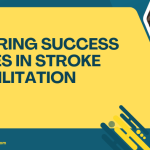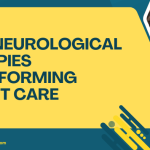Table of Contents
- Introduction
- 1. Virtual Reality Therapy
- 2. Robotic-Assisted Rehabilitation
- 3. Neuroplasticity-Focused Therapies
- 4. Wearable Technology
- 5. Telerehabilitation
- Conclusion
- FAQs
Introduction
Stroke rehabilitation is evolving rapidly, with new techniques and technologies emerging to enhance recovery outcomes. As we step into 2024, it’s crucial to stay informed about the latest advancements that can significantly impact the lives of stroke survivors. This article explores the top five advances in stroke rehab techniques for 2024, highlighting how these innovations are reshaping rehabilitation practices and improving patient care.
1. Virtual Reality Therapy
Virtual reality (VR) therapy has emerged as a groundbreaking tool in stroke rehabilitation. By immersing patients in a simulated environment, therapists can create engaging and motivating exercises tailored to individual needs. Here’s how it works:
- Immersive Environments: Patients can practice motor skills in a safe, controlled space, enhancing their engagement and willingness to participate in therapy.
- Real-Time Feedback: VR systems provide instant feedback, allowing patients to adjust their movements and improve their techniques.
- Customization: Therapists can tailor scenarios to address specific deficits, whether it’s improving hand-eye coordination or balance.
Research has shown that VR therapy can lead to significant improvements in motor function and cognitive skills. For more information on the efficacy of virtual reality in stroke rehab, check out resources from the American Stroke Association.
2. Robotic-Assisted Rehabilitation
Robotic-assisted rehabilitation devices are transforming traditional therapy methods. These devices can assist patients in performing repetitive movements, which is vital for recovery. Here’s why they’re beneficial:
- Precision and Consistency: Robotic systems offer precise movements, ensuring patients perform exercises correctly, which can lead to faster recovery.
- High Repetition: These devices can facilitate numerous repetitions of movements, crucial for motor relearning.
- Objective Data: Robotic systems can collect data on patients’ performance, enabling therapists to fine-tune treatment plans.
Recent studies indicate that robotic-assisted therapy can significantly improve upper limb function in stroke survivors. For a deeper dive into robotic rehab techniques, check resources from IEEE Xplore.
3. Neuroplasticity-Focused Therapies
Neuroplasticity is the brain’s ability to reorganize itself, forming new neural connections throughout life. In stroke rehabilitation, harnessing neuroplasticity is essential for recovery. Here are some therapies that emphasize neuroplasticity:
- Constraint-Induced Movement Therapy (CIMT): This technique encourages the use of the affected limb by constraining the unaffected limb, promoting brain reorganization.
- Task-Oriented Training: This involves repetitive practice of functional tasks that mimic real-life activities, enhancing the brain’s ability to adapt.
- Mirror Therapy: Using a mirror to reflect the movement of the unaffected limb can trick the brain into thinking the affected limb is moving, promoting recovery.
Research supports the effectiveness of neuroplasticity-focused therapies, making them a staple in modern rehabilitation practices. For more insights, visit Frontiers in Neurology.
4. Wearable Technology
Wearable technology is gaining traction in stroke rehabilitation, offering innovative ways to monitor and motivate patients. Here’s how wearables are enhancing recovery:
- Activity Tracking: Devices like smartwatches can monitor physical activity levels, providing valuable data to therapists.
- Real-Time Feedback: Wearables can offer instant feedback on posture, movement, and activity levels, encouraging patients to stay engaged.
- Remote Monitoring: Therapists can track patients’ progress remotely, allowing for timely adjustments to rehabilitation plans.
The integration of wearable tech in rehabilitation not only empowers patients but also fosters a collaborative approach to recovery. For more on wearable technology in healthcare, explore PubMed Central.
5. Telerehabilitation
Telerehabilitation is revolutionizing access to stroke rehabilitation services, especially for those in remote or underserved areas. Here’s why telehealth is becoming crucial in stroke recovery:
- Increased Access: Patients can receive therapy from the comfort of their homes, breaking geographical barriers.
- Flexibility: Telehealth offers more flexible scheduling, accommodating patients’ needs and increasing participation rates.
- Continuity of Care: Regular check-ins via telehealth can help maintain progress and ensure adherence to rehabilitation plans.
Numerous studies indicate that telerehabilitation can be as effective as in-person therapy for many patients. For further reading on telehealth advancements, visit the Telehealth Resource Centers.
Conclusion
As we look ahead to 2024, the advancements in stroke rehabilitation techniques are promising and transformative. From virtual reality therapy to telerehabilitation, these innovations are enhancing patient care and recovery outcomes. By staying informed and embracing these technologies, healthcare providers can offer more effective and personalized rehabilitation experiences for stroke survivors.
FAQs
1. What is the most effective stroke rehabilitation technique?
The effectiveness of stroke rehabilitation techniques can vary based on individual needs. However, approaches like virtual reality therapy and neuroplasticity-focused therapies have shown significant promise in recent studies.
2. How long does stroke rehabilitation typically last?
The duration of stroke rehabilitation varies widely depending on the severity of the stroke and the specific needs of the patient. Most patients engage in rehabilitation for several weeks to months, with ongoing support as needed.
3. Can I do rehabilitation exercises at home?
Yes! Many rehabilitation exercises can be performed at home, especially with the guidance of a therapist. Programs may incorporate telehealth options to help patients stay on track.
4. Are there any risks associated with new rehabilitation technologies?
While most new rehabilitation technologies are designed to be safe, it’s essential to consult with a healthcare professional before starting any new treatment. They can help assess suitability based on individual conditions.
5. Where can I find more information about stroke rehabilitation resources?
For more information, consider visiting the American Stroke Association or the National Institute of Neurological Disorders and Stroke.
By staying informed and engaged with these advancements, stroke survivors can look forward to a brighter and more empowered recovery journey. For further insights on neuro care, including the benefits of early intervention and the importance of supportive environments, check out related articles like Top 5 Benefits of Early Intervention in Neuro Care and Top 5 Challenges in Global Neuro Care Access Today.






